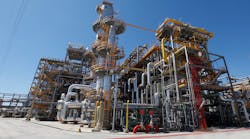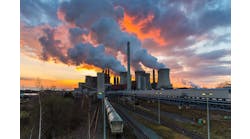In the 1970s, environmental concerns prompted the chemical industry to develop biodegradable detergents to replace earlier, highly polluting compounds. This was the birth of linear alkylbenzene (LAB), the main component in biodegradable detergent manufacturing.
Advancements in LAB technology are gaining attention in the consumer products world as manufacturers look for ways to produce safer, more environmentally friendly detergents.
For example, in 2021, Cepsa Química retrofitted its Puente Mayorga plant in Cádiz, Spain, to manufacture its LAB with the new Detal Flex 2-Phenyl technology, replacing its previous production method that relied on an acid catalyst, which posed significant health and environmental risks. In contrast, Detal uses a solid, non-corrosive catalyst.
Cepsa Química completed the transformation work in 2021, with an investment of 117 million euros. In addition to improving safety, the process helped the plant increase production by 14%, enhancing its position to meet growing global demand for biodegradable detergents. The improvements are related to lower fixed and operational costs using the Detal process over acid catalysts.
Cepsa Química also has documented lower raw material use in facilities that have converted from older processes to LAB as well as water-consumption reductions of 40% annually.
LAB Yesterday and Today
LAB, a component of linear alkylbenzene sulphonate (LAS), is currently used as the main ingredient in the production of biodegradable detergents.
LAS has been employed in detergent production for more than 50 years. It’s a biodegradable surfactant found in traditional detergent formats, such as liquid, powder or detergent bars, and more sophisticated products, including single-dose capsules or highly concentrated liquid detergents. In the early days, LAB production was carried out mainly through acid catalyst, resulting in several issues pertaining to process safety and environmental impact.
Roughly speaking, LAB production occurs in three stages. The first stage focuses on obtaining feedstock, the normal paraffins (n-paraffins) from kerosene. The second stage is the transformation of n-paraffins into alkene (monolefins), while the third and last stage is the alkylation of benzene by monolefins to obtain LAB.
Before the development of Detal technology, the final stage primarily involved acid catalysts, such as hydrofluoric acid (HF technology). This process due to the toxicity of acid catalysts, requires very strict safety protocols to eliminate risks for employees and the public. It’s also a more labor-intensive process and requires specialized facilities and equipment to neutralize the acid waste.
In the late 1990s, Cepsa Química and Universal Oil Products (UOP) developed Detal and built a facility in Bécancour, Quebec, based on this technology. This new process helped mitigate the main problems that, until then, had been encountered in LAB manufacturing.
In 2009, Cepsa Química’s research and development team enhanced the performance of its Detal technology by adding a transalkylation unit. The main benefit of this new process, called Detal Plus, is the need for less raw material consumption. It can increase LAB production by up to 5% without incorporating new n-paraffins, according to Cepsa Química’s experience.
Further developments in the process enabled the production of two grades of LAB: the high 2-phenyl grade (typical of traditional Detal technology) and the low 2-phenyl grade (typical of hydrofluoric acid). This technology, called Detal Flex 2-Phenyl, allows LAB producers to supply both grades of LAB from a single process unit. This has efficiency and cost advantages because suppliers can sell both grades from one plant, and customers that use both types of LAB can get all their product from a single site.
Sustainable Detergent Solutions for the Future
Consumers are increasingly aware of their carbon footprint. They are demanding products that use more sustainable materials and packaging. As technologies such as Detal demonstrate, sustainable solutions can help manufacturers balance productivity needs with customer and regulatory demands for more eco-friendly products and processes.
This new way of designing, developing and implementing chemical processes is called “green “chemistry.” For example, Detal meets the environmental criteria to obtain the EPD (Environmental Product Declaration) which supports environmental information through Life Cycle Analysis representing a commitment to continuous improvement in sustainability-related matters.
Detal has received various awards including the “2020 European Business Awards for the Environment” and the “ICIS Surfactants Awards”, an international recognition of excellence and innovation in different areas of the chemical sector, in the category of technological innovation.
While Detal technology offers significant advantages in terms of sustainability and productivity, as with any innovation, there are still challenges to be faced and overcome. One of the key focuses in the future will be to further reduce the carbon footprint of Detal products to meet consumers' demands and align with sustainability goals.
Looking ahead, Cepsa Química plans to continue its research and development efforts on sustainable products. This includes the development of renewable and recycled raw materials, in line with its sustainability strategy, such as its NextLab product. NextLab incorporates sustainable raw materials, such as biomass of certified origin or recycled materials.



